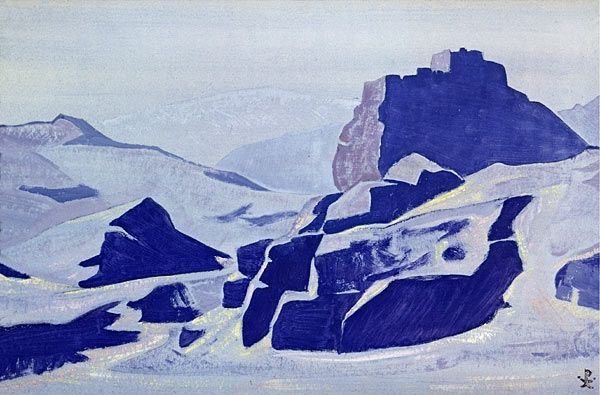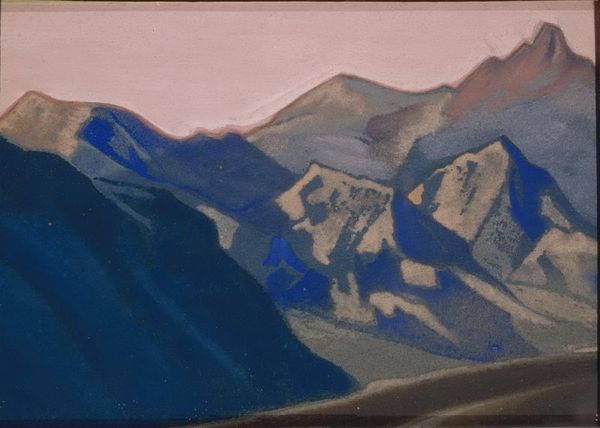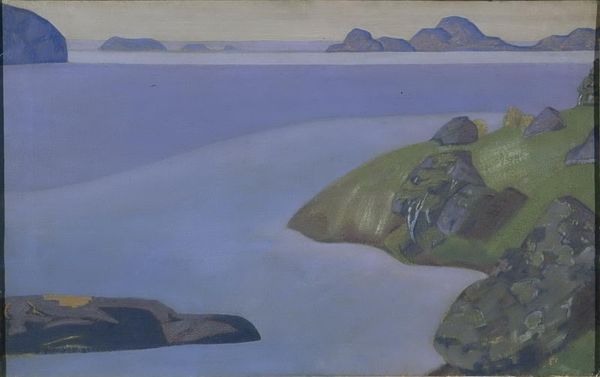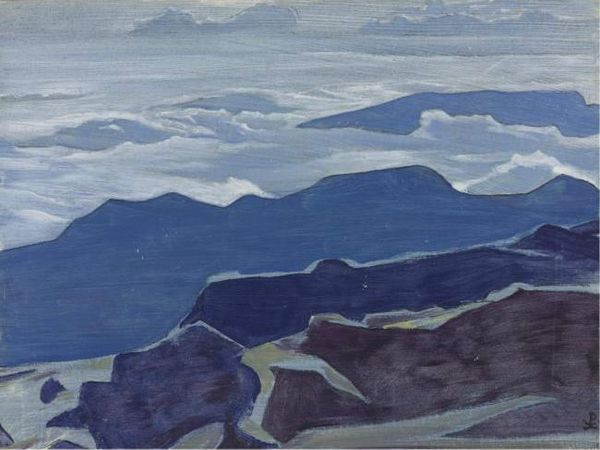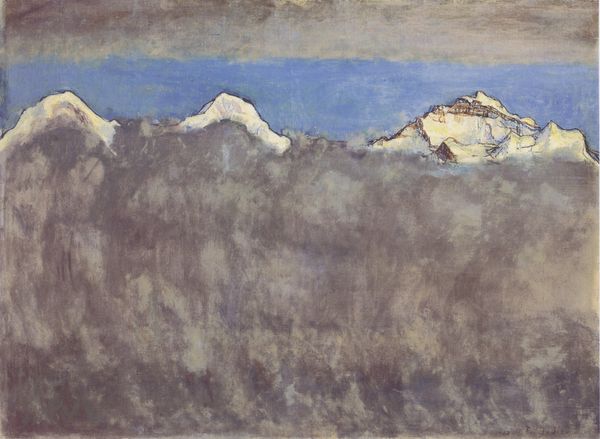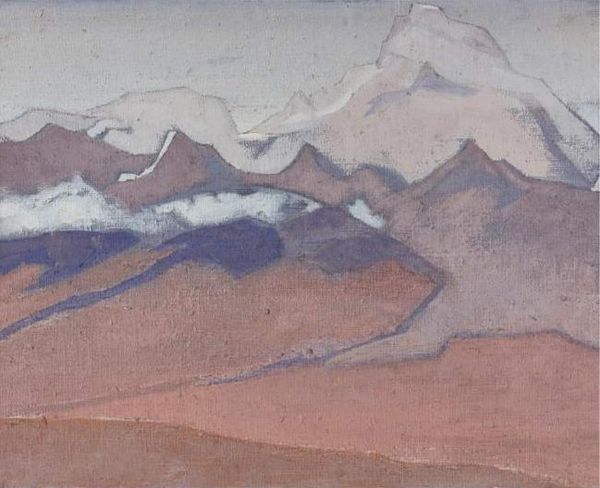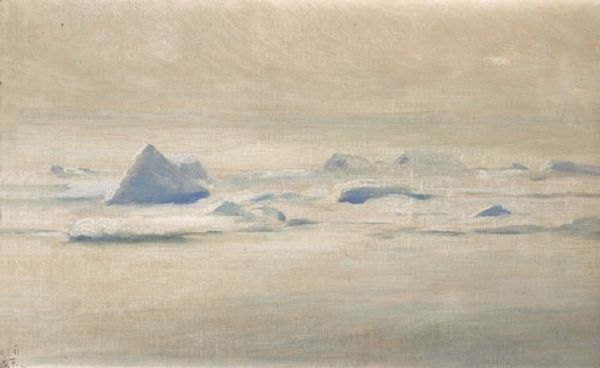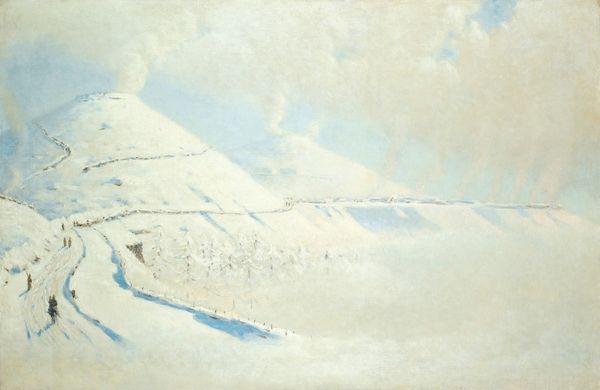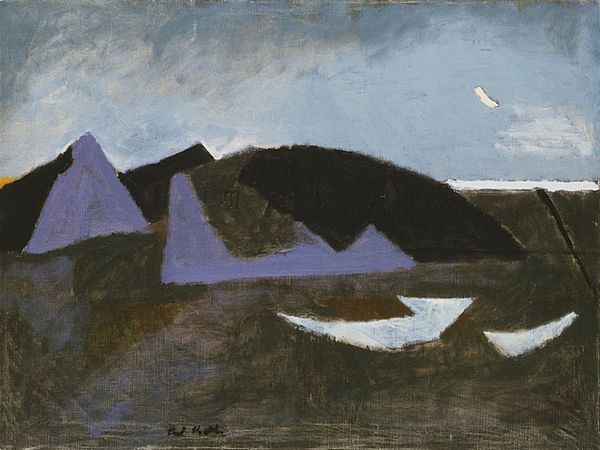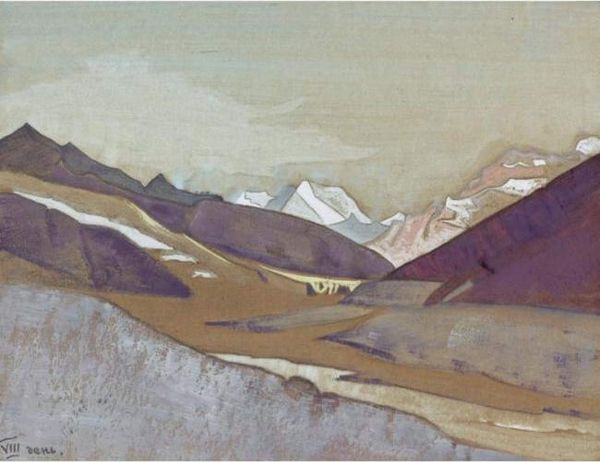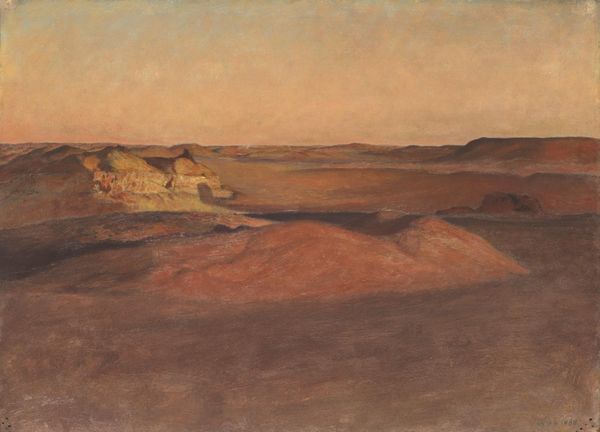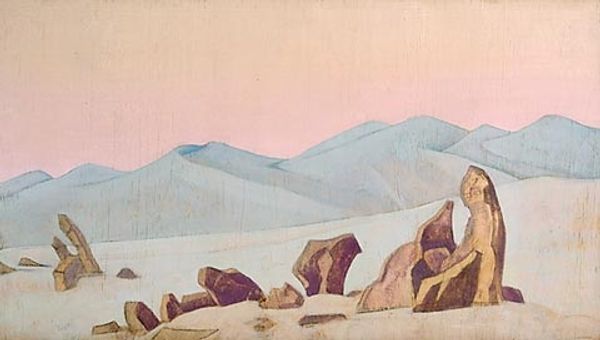
oil-paint
#
oil-paint
#
landscape
#
oil painting
#
column
#
orientalism
#
cityscape
#
history-painting
#
modernism
#
realism
Copyright: Public domain
Curator: Nicholas Roerich painted "Ruins of a Chinese fort" in 1926. The muted palette immediately sets a melancholic mood. Editor: That it does. The starkness of the landscape, combined with those crumbling structures, speaks volumes about the impermanence of power. What building techniques might those forts embody, and where did he encounter such buildings? Curator: Roerich was deeply invested in Eastern spiritualism and the preservation of cultural memory. The ruins become symbolic, almost archetypal, of lost civilizations, resilience and what might be seen as humanity's hubris. You notice, each "ruin" is painted uniquely, as if carrying its own spirit, and each represents the historical fort and watch tower system. Editor: So, beyond the romantic idea of lost civilizations, was there a specific cultural context he was engaging with? The very tangible, crumbling surfaces seem key. We are drawn into seeing labor processes through what the buildings contain in materials. Curator: Roerich had extensive travels across Asia, which strongly influenced his art. His orientalist tendencies were bound in symbolism, a yearning for a mythic past and imagined glory. It reflects his cultural preoccupations more than pure representation. The buildings might symbolize power or the end of such. Editor: That artistic choice reflects the means and motives behind their construction and subsequent deterioration. He isn't showing labor but evoking a landscape depleted and left for the elements. Curator: Exactly. His choices say more about the cultural associations that resonate for him, regardless of the precise historical accuracy of his depiction. Look at the ethereal colors he uses—that light hints at a spiritual dimension beyond mere physical structures, but are the result of pigments, the result of making things and deploying them. Editor: Indeed, that layering creates a striking tension, suggesting perhaps a complex interaction between nature and the built environment. Curator: It's been fascinating to look at this and peel away those layers and examine Roerich's choices, seeing that those crumbling shapes resonate even now. Editor: Yes, to think about these enduring ruins as the products of both labor and material choices has changed my sense of their history.
Comments
No comments
Be the first to comment and join the conversation on the ultimate creative platform.
